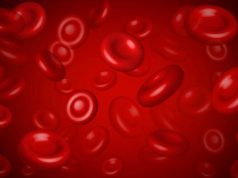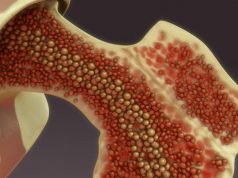Survival similar among those receiving hematopoietic stem cell transplant, conventional therapy
WEDNESDAY, Sept. 13, 2017 (HealthDay News) — Patients with thalassemia treated with hematopoietic stem cell transplantation (HSCT) have 30-year survival that is similar to that of conventionally treated (CT) patients, according to a study published online Aug. 29 in the American Journal of Hematology.
Giovani Caocci, M.D., from the University of Cagliari in Italy, and colleagues performed a single-center case-control study involving 258 patients who underwent sibling or unrelated HSCT (97 adults) and 258 age- and sex-matched CT patients.
The researchers found that in transplanted patients, the 30-year overall survival (OS) was 82.6±2.7 percent and thalassemia-free survival (TFS) was 77.8±2.9 percent compared with OS of 85.3±2.7 percent in CT patients (P = NS). Grade II-IV acute and chronic graft versus host disease incidence was 23.6 and 12.9 percent, respectively. There was a 6.9 percent probability of rejection. Transplant-related mortality was 13.8 percent, which was similar to the 12.2 percent cardiovascular event mortality in CT patients. High-risk Pesaro score correlated with lower OS and TFS (odds ratios, 1.99 and 1.54, respectively). For adult patients, the 23-year OS and TFS were 70±5 percent and 67.3±5 percent after HSCT compared with OS of 71.2±5 percent in CT (P = NS).
“The 30-year survival rate of ex-thalassemia patients after HSCT was similar to that expected in CT thalassemia patients, with the vast majority of HSCT survivors cured from thalassemia,” the authors write.
Abstract
Full Text (subscription or payment may be required)
Copyright © 2017 HealthDay. All rights reserved.








